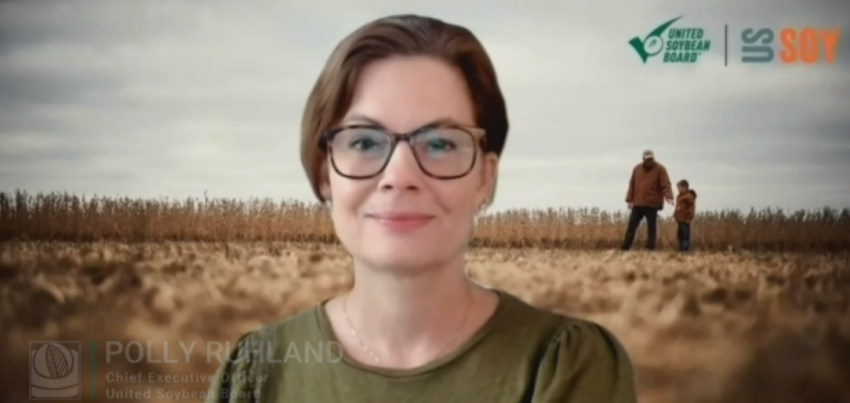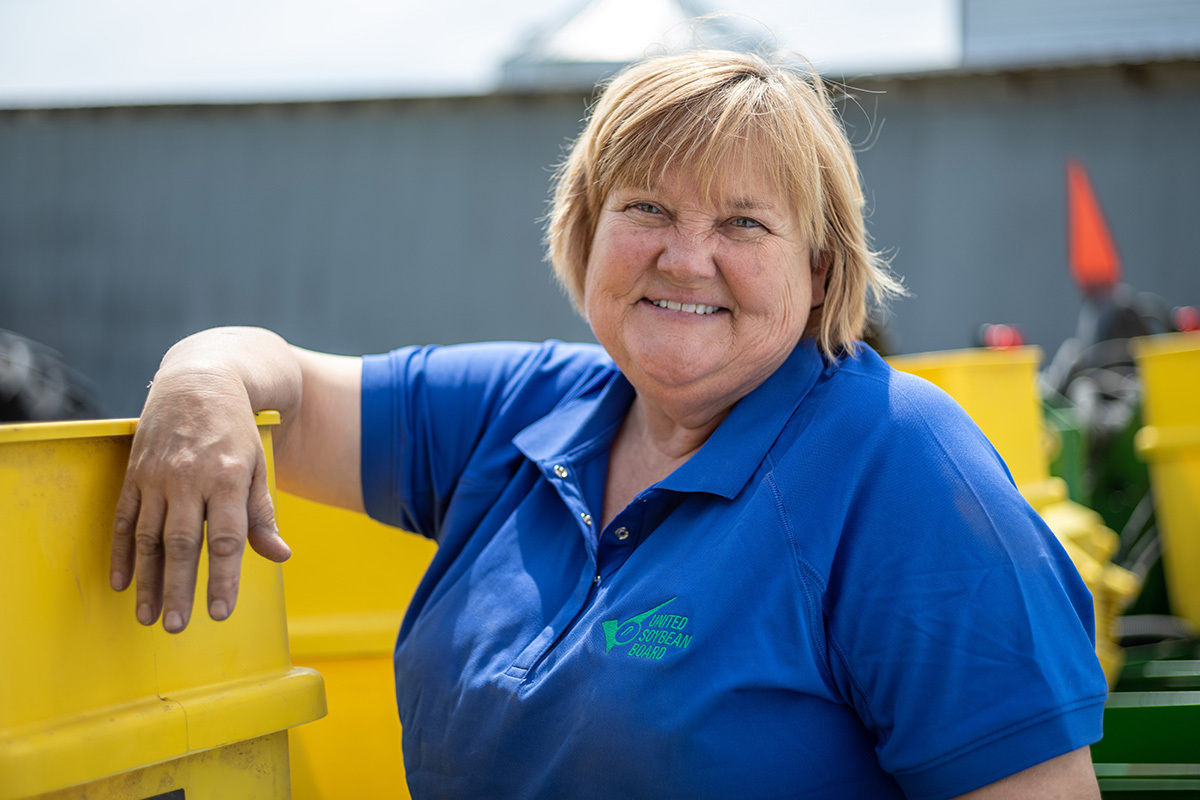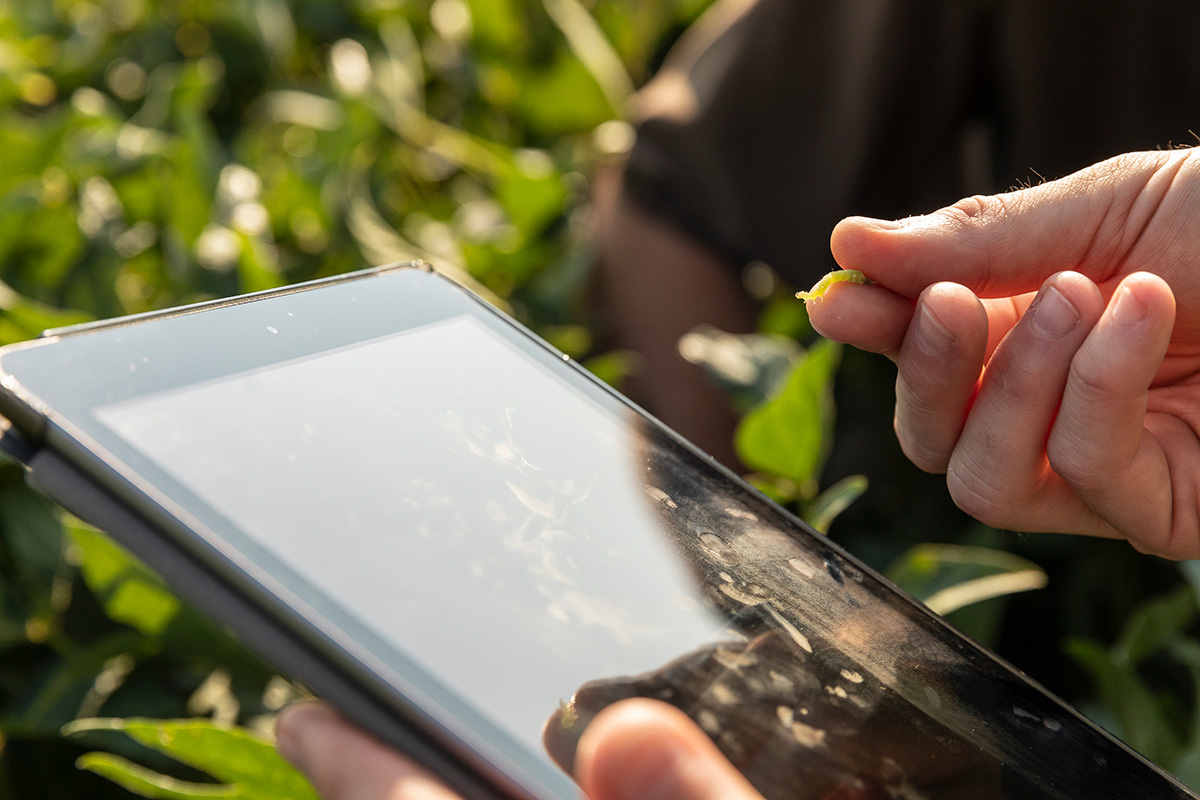Checkoff CEO Featured at World Food Prize Forum

The World Food Prize invited a familiar face of the soy community to its prestigious Norman E. Borlaug International Symposium, held virtually the week of October 12 – 16, 2020.
Polly Ruhland, USB CEO, joined the panel on safe, affordable, nutritious food, discussing sustainability, value-chain engagement, checkoff investments in global nutrition, innovation and technology in a wide-ranging conversation that reflected the importance of U.S. soybean farmers to the global food system.
Sustainability Continues to Be a Priority
Soil maintenance is a hallmark for soybean production resiliency. USDA data reported that conservation tillage was used on 70% of soybean acres, and no-till accounted for 40% of total acreage in soybeans.
“Farmers spend every day outside with their hands in the soil, to grow food for all. Passing the responsibility of feeding the world while leaving the land in better condition is our purpose. Farming and taking care of the land is not a profession for us, it’s a way of life,” said Ruhland during the discussion.
Value-Chain Engagement Focused on the Future
The agriculture and food sectors have a unique role in the discussion of global nutrition to address climate change, strengthen rural communities, provide decent livelihoods that support economic growth.
One part of that discussion is with end users. U.S. Soy is engaging the food value chain and sharing the story of U.S. soy’s sustainability to increase the perception of soy products as a critical ingredient in the world’s future.
“Farmers operate purpose-driven businesses. As raw material suppliers, they have enormous impact on economic, environmental and social issues, and take their role in supporting global communities very seriously,” Ruhland shared.
The Impact of the World Initiative for Soy in Human Health
Demand for protein consumption around the world continues to grow; however, in some areas of the world, where populations face economic challenges, there are limited options to access protein-rich diets.
And with people from those populations in mind, collaborative approaches that represent multifaceted stakeholders will help ensure that affordable, high-quality protein has a place in their daily diets.
“We must remember that global food production, feeding the world, is never a one-size-fits all solution—be that in the regulatory, environmental, or social realm. Workable solutions will bring farmers to the table with other experts, to craft ways to solve local and regional nutritional issues that take into account the capacity of the land, people and culture.”
Why U.S. Soybean Farmers Matter to Global Nutrition
Nourishing the more than 9 billion people by 2050 means the world needs every form of protein that’s available, including animal protein, soy and other protein sources.
U.S. soybean farmers must be part of the solution by producing protein collectively as a nutrient-dense foundation for growth and health to better our global society.
“Local, regional AND global solutions that recognize farming technology and take into account soil, water and human capacity, as well as cultural needs, and address infrastructure challenges to also better facilitate global distribution of food,” Ruhland said.
Ruhland also discussed how the latest technologies and innovations are helping U.S. soybean farmers meet the growing demand for protein.
“We must remember that adoption of technology has been, and will become, even more important as the climate continues to change,” Ruhland said. “This is critical to the future of farming, and to global nutrition. Technology in farming allows us to tailor production solutions to meet the diverse needs of people and planet.
Ruhland stressed the importance of farmer representation in conversations about the global food system, emphasizing U.S. farmers’ collective commitment to providing a sustainably sourced ingredient for customers all around the globe.
“Soy farmers want to be in the discussion and part of any solution to nourish a global population with high-quality and sustainable protein sources, both for people and animals,” said Ruhland.



